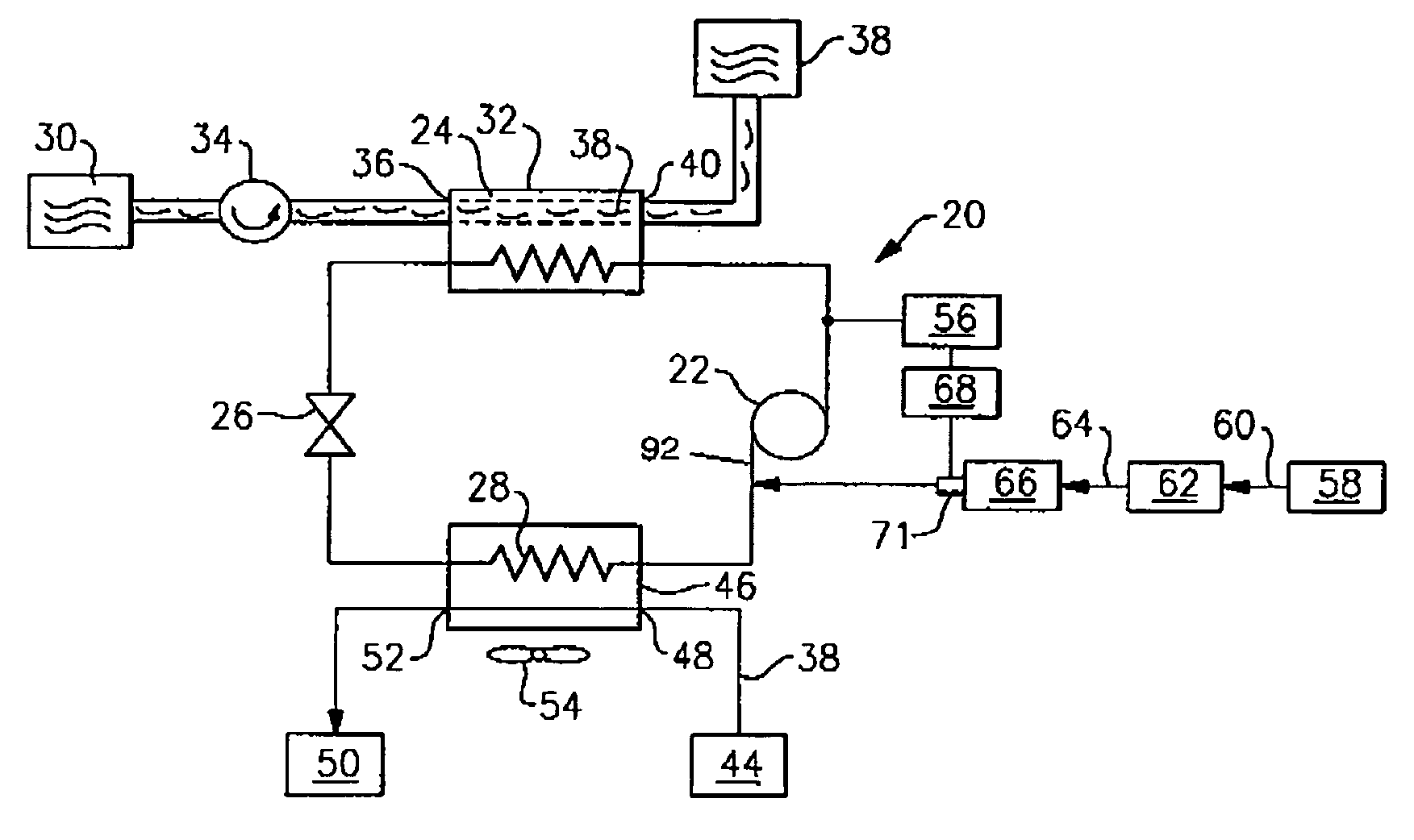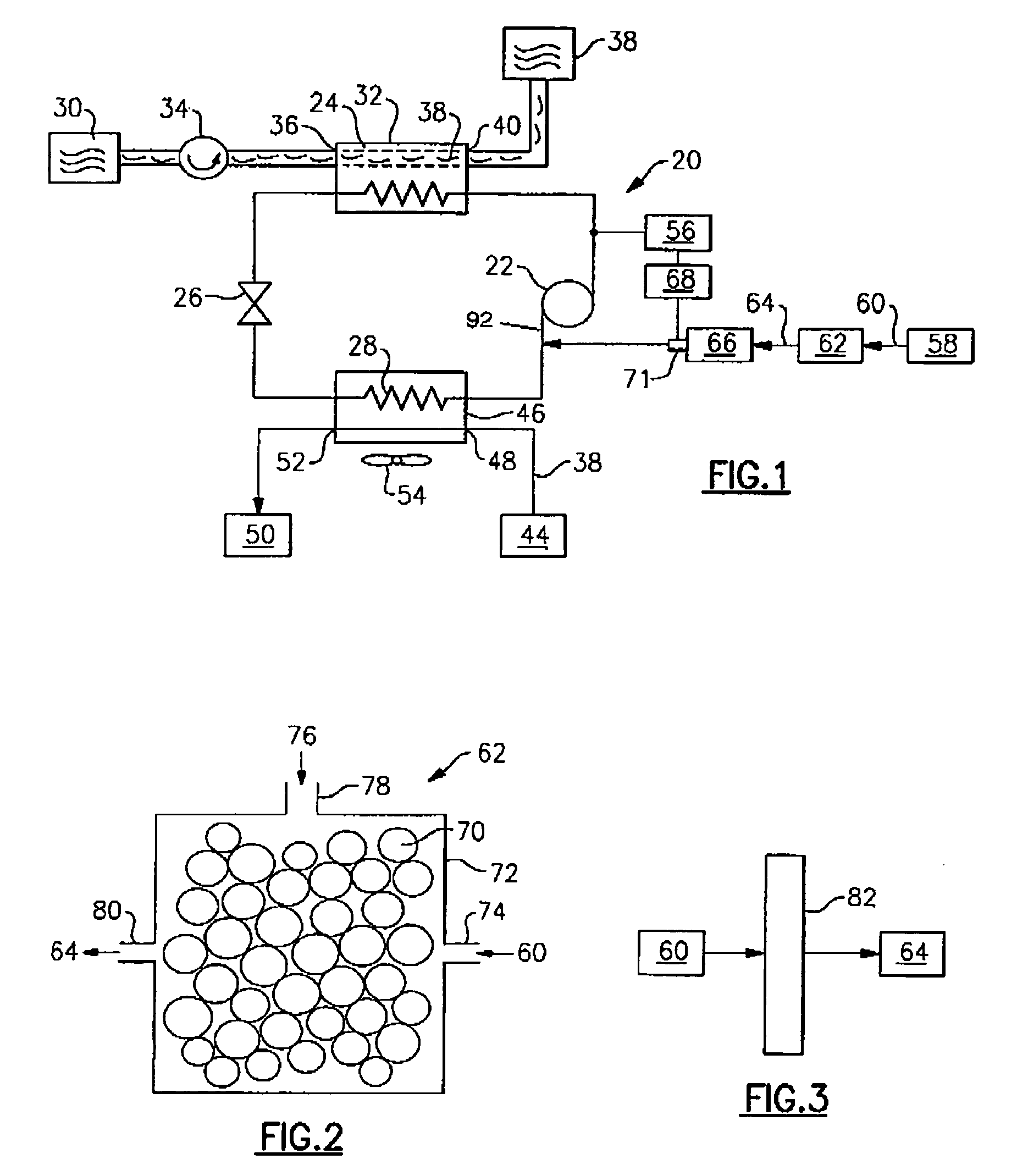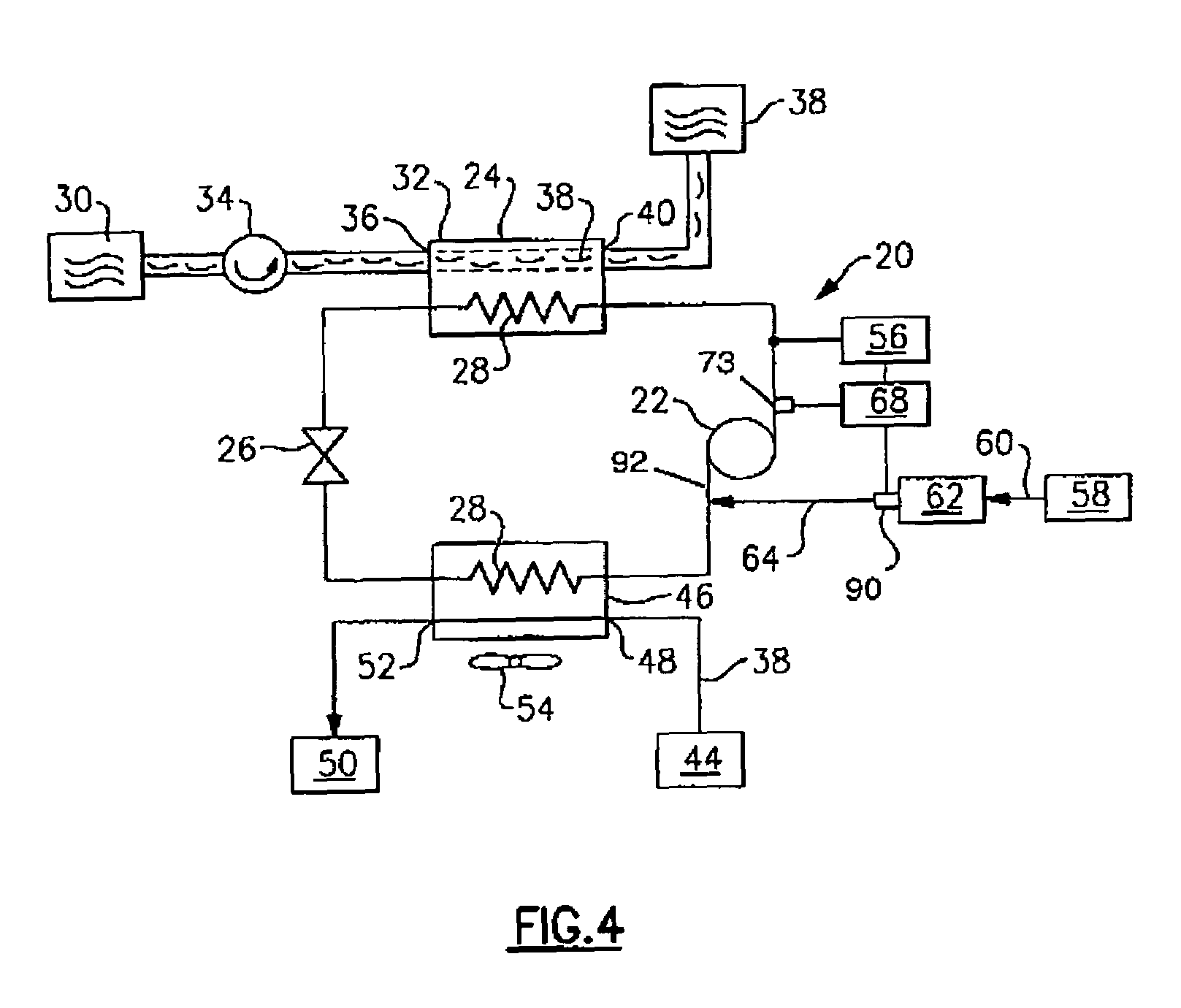Method for extracting carbon dioxide for use as a refrigerant in a vapor compression system
a technology of vapor compression system and carbon dioxide, which is applied in the direction of domestic cooling apparatus, lighting and heating apparatus, transportation and packaging, etc., can solve the problems of increasing the possibility of refrigerant leakage, affecting the environment, and phasing out chlorine based refrigerants
- Summary
- Abstract
- Description
- Claims
- Application Information
AI Technical Summary
Problems solved by technology
Method used
Image
Examples
first embodiment
[0024]In a first embodiment, as shown in FIG. 1, an internal combustion engine 58 produces an exhaust gas stream of combustion products 60 including carbon dioxide 64. The carbon dioxide 64 is extracted from the combustion products 60 by a carbon dioxide extraction system 62. The extracted carbon dioxide 64 is then directed to and stored in a storage tank 66. A pump or compressor 90 can be used to increase the pressure of the carbon dioxide in the storage tank 66 to allow the carbon dioxide to be more easily used by the system 20. By extracting carbon dioxide 64 from the combustion products 60, the amount of carbon dioxide emitted into the atmosphere is reduced, reducing pollution.
[0025]A sensor system 56 detects the amount of refrigerant in the system 20. When the sensor 56 detects or estimates that the amount of the refrigerant in the system 20 is below a threshold value, charge has leaked from the system. The sensor system 56 sends a signal to a control 68, indicating that the re...
second embodiment
[0033]FIG. 4 schematically illustrates the present invention. After the carbon dioxide 64 is extracted from the combustion products 60 by the carbon dioxide extraction system 62, the carbon dioxide 64 is directly added to the system 20. A small pump or compressor 90 may be used to raise the pressure of the carbon dioxide from the extraction system 61 to the system 20 pressure. The carbon dioxide 64 can be added at any point in the system 20. Preferably, the carbon dioxide 64 is added add at the suction 92 of the compressor 22 as this is where the pressure of the system 20 is the lowest.
[0034]The sensor system 56 detects or estimates the amount of carbon dioxide refrigerant in the vapor compression system 20. When the sensor system 56 detects or estimates that the amount of the refrigerant in the system 20 is above a threshold value, there is too much charge in the system 20. The sensor system 56 sends a signal to a control 68, indicating that the refrigerant level is above the thres...
PUM
 Login to View More
Login to View More Abstract
Description
Claims
Application Information
 Login to View More
Login to View More - R&D
- Intellectual Property
- Life Sciences
- Materials
- Tech Scout
- Unparalleled Data Quality
- Higher Quality Content
- 60% Fewer Hallucinations
Browse by: Latest US Patents, China's latest patents, Technical Efficacy Thesaurus, Application Domain, Technology Topic, Popular Technical Reports.
© 2025 PatSnap. All rights reserved.Legal|Privacy policy|Modern Slavery Act Transparency Statement|Sitemap|About US| Contact US: help@patsnap.com



